Charcoal vs graphite: there are notable differences in the way that these two popular drawing mediums perform and finished drawings look. Graphite and charcoal are carbon-based drawing materials that both come in pencil formats. They can both be used to create a large value range of highlights and shadows, for quick sketches or more detailed works.
Artists will use different techniques with each medium and should choose the correct drawing tool based on their desired results. Use this guide to determine which drawing tool to introduce to your art practice.
Disclaimer: Fine Art Tutorials is a reader supported site. When you make purchases through links on this site, we may earn a small commission at no extra cost to you.
What are the differences in the working properties of charcoal and graphite?
The working properties of charcoal

Charcoal and graphite behave differently in practice. Marks made by charcoal sticks appear soft and can range in darkness and erasability, depending on whether you have vine charcoal or compressed charcoal. Generally, vine charcoal is easier to lift from paper with erasers, this is due to the large particle size and lack of binder.
Compressed charcoal behaves nothing like graphite, it creates dark indelible marks that are trickier to erase than vine charcoal. Charcoal is matte in finish and also creates a lot of dust whilst drawing. Because the charcoal is looser on the paper, it’s essential to get a paper with some tooth or slight surface texture to ensure adhesion of multiple layers. The softness of charcoal can vary, with softer sticks able to make darker marks.
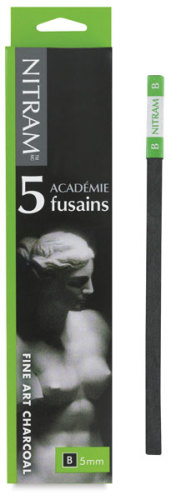
One of the best brands of charcoal available to artists is Nitram. This charcoal ranges in softness and the sticks are extra durable. It has all the best qualities of charcoal but is much less prone to breakage and dusting.
How graphite behaves in action
On the other hand, graphite mostly comes in pencil format, which enables artists to draw fine, precise marks. Graphite pencils also range in hardness. Hard graphite pencils range from 8H (extra hard) to HB (medium). Most people will be familiar with using HB graphite pencils.
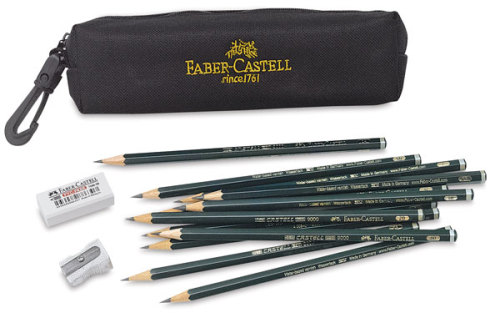
The harder graphite pencils are useful for creating technical drawings, as they impart fine, precise, easy to erase lines. You’ll likely find these in an architect’s pencil case. Softer pencils range from a B which is medium soft, to 8B and beyond, which is the softest end of the scale. With a soft graphite pencil, artists can achieve a greater value range depending on the pressure applied to the pencil. The adherence of graphite is better than charcoal, so artists can use graphite on smoother paper.
Charcoal vs graphite comparison

This image compares the marks made by a charcoal pencil and a graphite pencil (7b). Although the marks look similar, you’ll notice that the graphite marks have a slight sheen to them. Graphite is more reflective, grey and almost metallic looking compared to charcoal. The charcoal has a richer, matte black appearance that is non-reflective. Charcoal feels softer and more crumbly to draw with, whereas graphite is more sturdy and difficult to break.
What effects can you achieve with charcoal vs graphite
Charcoal is generally used for looser, expressive, almost ‘painterly’ looking drawings. The charcoal is easy to blend and can appear softer on the paper.
With compressed charcoal, it’s easy to achieve deep, rich black tones that are completely matte. This can make charcoal appear darker in appearance compared to graphite and may even be more beneficial for artists who want to scan or photograph their work for print.

Less pressure is required to impart the charcoal onto the paper compared to graphite. Using vine or willow charcoal can produce expressive marks, which can make it more suitable for large drawings. Hold the vine at the end and move your elbow or shoulder across the paper to make broad marks. You can cover a lot of ground quickly by using charcoal in vine or block format.
Due to the hardness of the lead, you can apply more pressure to graphite pencils. Graphite lends itself to precision, detail and can be used to achieve harder edges in a drawing compared to charcoal. Careful when applying lots of pressure to a graphite pencil, you can inadvertently buff the graphite on the paper which is what creates a shiny appearance.
Examples of charcoal vs graphite drawings
Graphite is the perfect instrument for creating sharp lines in the hair, eyes and necklace. This artist has created value transitions by loosely hatching across the shadow, which gives the portrait texture. Portraits like this also look great on toned paper using a white pencil for the highlights. To improve your portrait drawing skills, get a sketchbook and start a daily drawing practice. Graphite is perfect for sketchbook work as it’s much less dusty and messy compared to graphite.
This artist draws a similar subject to the graphite drawing example, but the effect is entirely different, attributed to the use of charcoal. The lines are more expressive, loose and painterly looking. Pay attention to how the artist builds form and establishes tonal masses before refining areas. The impression of the subject can be established much more quickly with charcoal and the effect is stunning.
If you want more drawing ideas, check out our guide of 70+ prompts and tutorials for beginners and professionals alike.
Why should you use charcoal? The benefits of charcoal
Charcoal encourages gestural mark making techniques. Create big, bold, sweeping, dark marks across the paper with a light touch. Use the side of the charcoal stick and move it around to create these loose, expressive effects. Due to the softness of the material, charcoal can be easily manipulated, blended and smudged on the surface.
The colour of charcoal is black, compared to graphite which appears as a more metallic grey. The intensity of the black can be altered with the pressure with which it is applied. Vine or block charcoal on its side to cover large areas of the surface quickly. It’s easier to cover more ground with charcoal compared to graphite. Fine details can also be achieved with charcoal, use vine charcoal on its edge, or opt to get charcoal pencils for more precision.
Charcoal will lift easily from the surface, due to the absence of binder. You can establish a mid tone and then lift the charcoal from the surface easily with a kneaded eraser.
There is versatility to the charcoal medium. Brush powdered charcoal onto the paper for a soft appearance and reserve charcoal pencils for the finest details. Alternatively, you can choose to use a vine charcoal to achieve a broad range of effects. For a complete tutorial on charcoal drawing for beginners, check out our guide!
The benefits of drawing with graphite
Graphite is an excellent drawing medium for building coverage slowly. For example, you could start with a H grade pencil such as H or HB to lightly sketch out an outline of the drawing. Then use B grade pencils, like 5B to shade darker values.
Graphite is a hardy medium, it’s less prone to breakage than charcoal and it’s far less messy. If you’re using charcoal sticks, or blocks, it can create a lot of dust, which can get on your hands and around the workspace.
With graphite, artists can achieve a large value range, especially lighter values in highlight tones. Use a kneadable eraser or even paper stump to lift graphite and sketch in lighter values.
Another benefit of graphite is that artists can achieve incredibly sharp, precise lines and hard edges with H grade pencils. If you want to draw architecture, cityscapes or other structural objects, it’s worth trying graphite for this attribute.
Finally, because graphite binds to paper more easily than charcoal, artists can use it with extra smooth Bristol Board paper. Graphite will glide across the paper smoothly and bind, allowing artists to create smooth gradations without any of the paper’s fibres obscuring the details. Artists can draw with graphite without the need for fixative, whereas artists will often use fixative to protect a finished charcoal drawing.
What are the two drawing mediums made from?
What is charcoal made from?
Charcoal is made from vine or willow twigs that have been heated to a high temperature in an oxygen-deprived kiln.
Compressed charcoal sticks often also contain either gum or wax; the charcoal powder and binder is shaped and compressed in a mould to create the shape of the drawing material. These compressed charcoal sticks are often harder than vine charcoals which contain no binder. The less binder present in compressed charcoal, the softer the stick will be.
What is graphite made from?
Graphite is a naturally occurring material that is an allotrope of carbon (a different structural form). It can also be produced synthetically by heating carbon containing substances to high temperatures. This modern method produces synthetic graphite that has a much higher purity than naturally occurring graphite. The binder of graphite pencils often also contain clay and waxes.
Types of charcoal
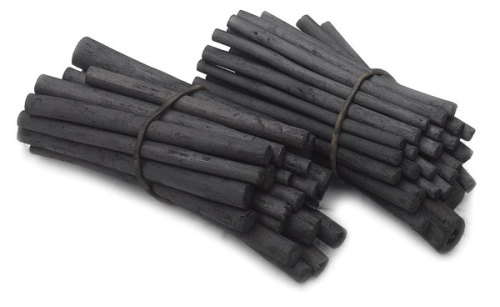
Charcoal comes in an abundance of formats, giving artists flexibility when using the medium. Artists can work with natural vine charcoal sticks that are lighter, softer and easier to erase than compressed charcoal.

Compressed charcoal is made from synthetic charcoal and binder and comes in uniform blocks. The compressed sticks are darker, sturdier, less dusty but more difficult to erase than natural vine charcoal.
Artists can select to use charcoal pencils, which are made from compressed charcoal for a less messy and more detail oriented drawing experience.
Powdered charcoal enables artists to softly dry brush loose charcoal onto paper. This can be used for covering large areas, or creating soft transitions between values. This drawing supply is a favourite among portrait artists.
A brand of charcoal that is used by professionals and ateliers is Nitram. This brand makes charcoal with a slightly different process to regular charcoal sticks that makes the charcoal more durable. Use this brand to avoid crumbling, snapping and dusting. Check out our guide to find out more about the best charcoal for drawing.
Different types of graphite pencils
Aside from varying in quality and hardness, graphite also comes in a water-soluble and powdered variety. Regular graphite pencils are the most popular drawing tool, for artists choosing graphite that is made to a high standard can benefit the drawing process.
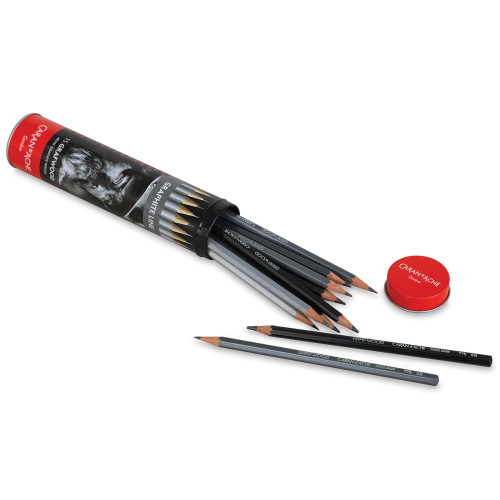
A quality graphite pencil will be made with quality binder and glide smoothly across the paper, providing a consistent value range. Graphite pencils from Caran d’Ache blend beautifully and have good lightfast ratings, meaning that they won’t fade over time. Another artist quality graphite pencil is Faber Castell’s 9000 series pencil.
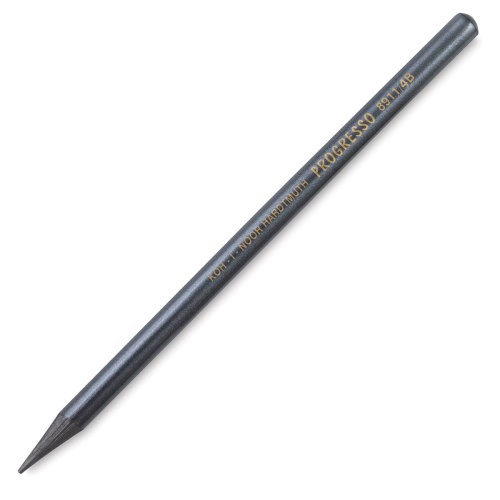
Graphite also comes in a woodless pencil variety. The Koh-I-Noor pencils have a lacquered coating, which can be useful for creating thicker lines when held on its side.
Artists can get graphite in powder form too, brush onto the paper to create soft, smooth gradations.
Charcoal vs graphite: supplies and accessories
Artists can use slightly different supplies with graphite and charcoal, although many supplies are interchangeable with the two mediums. For example artists must use paper with tooth to allow charcoal to adhere better, but these papers can also be used with graphite.
Erasers
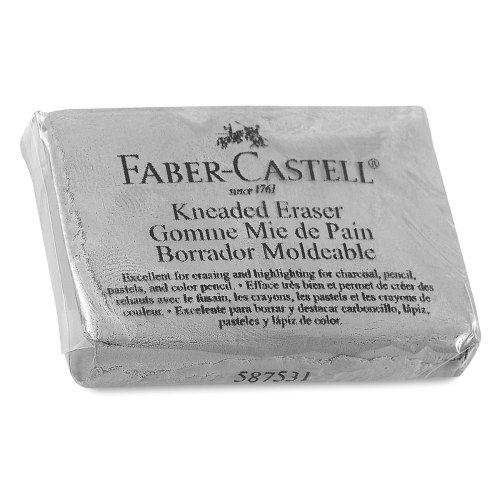
There are several different types of erasers that can be used with both graphite and charcoal. Kneadable erasers are self cleaning, malleable and leave no residue on the paper. They can be used to lift marks subtly, or completely.
Black plastic erasers are hard erasers that remove graphite and charcoal marks cleanly with minimal residue. You don’t need to use much pressure with this eraser.
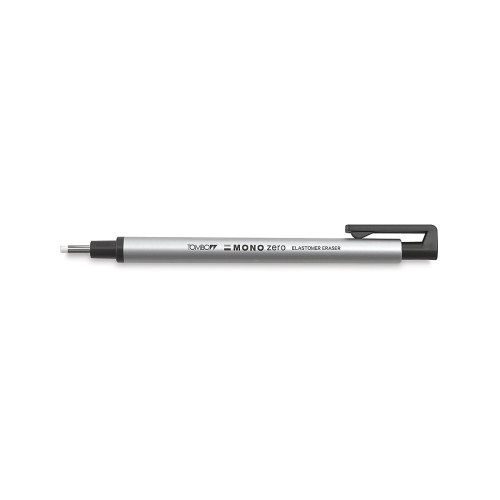
Tombow Mono Zero erasers have a fine tip. Use these for extra fine highlight details, lifting precise lines and cleaning small edges.
Paper

Graphite will adhere to smooth papers as well as more textured papers. Artists who want to create ultra detailed pieces could opt for getting Bristol Smooth paper. This paper is great for displaying smooth tonal transitions and details unobscured by paper texture. The great this about Bristol Smooth paper is that it is thick, like card. Because graphite leads are harder than charcoal, it’s beneficial to work on thicker papers. Check out our guide on the best surfaces for drawing for more information.
Charcoal artists should opt to work on paper with a slight tooth or texture, as this will ensure adhesion of layers. Papers like Velour, hot pressed watercolour paper, sanded pastel paper all work fantastically with charcoal. Pastelmat feels like velvet to the touch, but the texture clings to dusty charcoal, increasing the adhesion of layers and reducing the need for fixative.
Can you use charcoal on canvas?
Charcoal can be used on canvas. Choose a canvas with a tighter weave for a less textured appearance. The toothy texture of canvas is perfect for gripping onto loose charcoal dust. The benefit of using canvas is that you can erase and lift layers without worrying about damaging the fibres.
Drawings on paper will appear shaper and more detailed compared to on canvas, so canvas would be a great surface choice for making loose abstract marks. It’s also easier to remove darker charcoal marks from paper compared to canvas. It’s easy to blend and build layers on canvas, but you will need a fixative to secure layers in place to prevent smudging.
Sharpeners
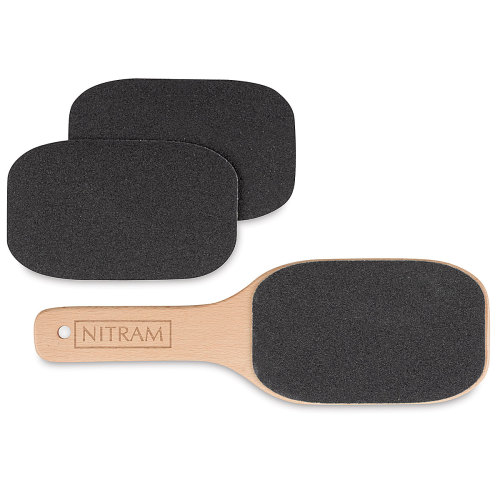
To shape and sharpen charcoal, use a sharpening block. This block by Nitram is large and can be held in the hand for ease of use. Simply drag the charcoal across the sandpaper to shape the end. Make sure to get a durable charcoal like Nitram charcoal to avoid breakage. This block can also be used with other drawing media, including pencils.
To sharpen a graphite pencil to a long point you can either sharpen it with a knife, or get one of these sharpeners that prevents breakage.
Fixative

The Sennelier Delacroix fixative is a transparent sealant that protects graphite and charcoal drawings. A coating of the spray will give a matte finish, prevent smudging and protect the drawings from the elements. Make sure to ventilate your space properly and hold the nozzle 30cm away from the finished drawing to spray an even coating. To fully seal the drawing, you may need to spray around three layers. Make sure to test the spray upon first use on a scrap piece of paper before using it on a finished piece. This is because the spray may not disperse evenly on first use. This particular spray isn’t perfectly water resistant. Make sure to handle a drawing with care if you are sending it to a gallery or collector after fixing it.
If you are drawing with graphite and using it for sketchbook work, a fixative isn’t necessary. Charcoal drawings will smudge if not fixed, so it’s pretty much essential to seal them.
Charcoal tips for drawing
Create detailed highlights with a Tombow Mono Zero eraser. Erase small sections with this fine tip eraser to create the impression of texture. To lift charcoal for more subtle highlights, use a kneaded eraser.
Take care not to touch the paper when drawing, as the oils on your hands can transfer to the paper, making charcoal appear blotchy. Most artists will guard their hands from the paper whilst working, by placing a clean scrap of paper in between the hand and surface.
If you are mapping out the placement of elements as you go, rather than working from a detailed under drawing, start with a lighter sketch. Slowly build on the dark shadow areas as you go. It’s easier to correct and lift highlights from mid tone or light charcoal marks.
Charcoal techniques
Hold a vine charcoal stick at the end to create large sweeping, expressive strokes. Focus on capturing the movement and impression of your subject, rather than rendering detail.
Similar techniques used with graphite can be used with charcoal. Stipple and hatch the charcoal onto the paper to create a value range. Or vary the pressure applied to the stick to create tonal variation.
Charcoal blends easily, simply rub the paper with a paper stump, brush, q-tip or paper towel. Sofft tools made for use with pastel can also be used with graphite for blending and pressing graphite into the paper.
Lift charcoal powder with a kneadable eraser. Charcoal can be used for subtractive drawing methods, where the broad shapes and tonal masses are first established and then refined as the drawing progresses. Techniques like lifting can be used to tidy edges and reveal highlights when drawing with this method. Approaching a drawing like this is a more advanced technique, but if you come from a painting background, it may feel more intuitive to draw in this manner. Take a look at our reading list for pencil artists for more in depth guides on how to draw.
Graphite drawing techniques
A broad range of techniques can be used with graphite pencils. The hardness of the pencil will impact the finished look of the drawing. For example, it’s essential to get a soft pencil of 5B+ to achieve a large value range when tonal shading. An unsharpened 8B pencil will give you dark, thick lines when hatching. Whereas if you were to use a 2B pencil for hatching, you can achieve sharper edges than with an 8B.
Check out our pencil drawing techniques guide for a complete list of drawing techniques and how to use them in practice.
Can you use charcoal and graphite together?
The two materials can be used together. Use harder graphite pencils to make small, detailed marks and charcoal to make organic, expressive marks. For example, if you were drawing a building in a landscape, you could use graphite for precise and technical details of brickwork, then draw the surrounding trees and foliage loosely with charcoal. This is just one example, of course there are a multitude of ways that the two mediums can be combined.
If you’ve found anything on this site especially useful, you can make a donation to me through PayPal. I take a lot of time to research and write each topic, making sure each tutorial is as detailed as possible and I make all my content freely available. Any small donation (even the price of a cup of coffee!) can help me to cover the running costs of the site. Any help from my readers is much appreciated :).
Follow the link in the button below to support this site.

